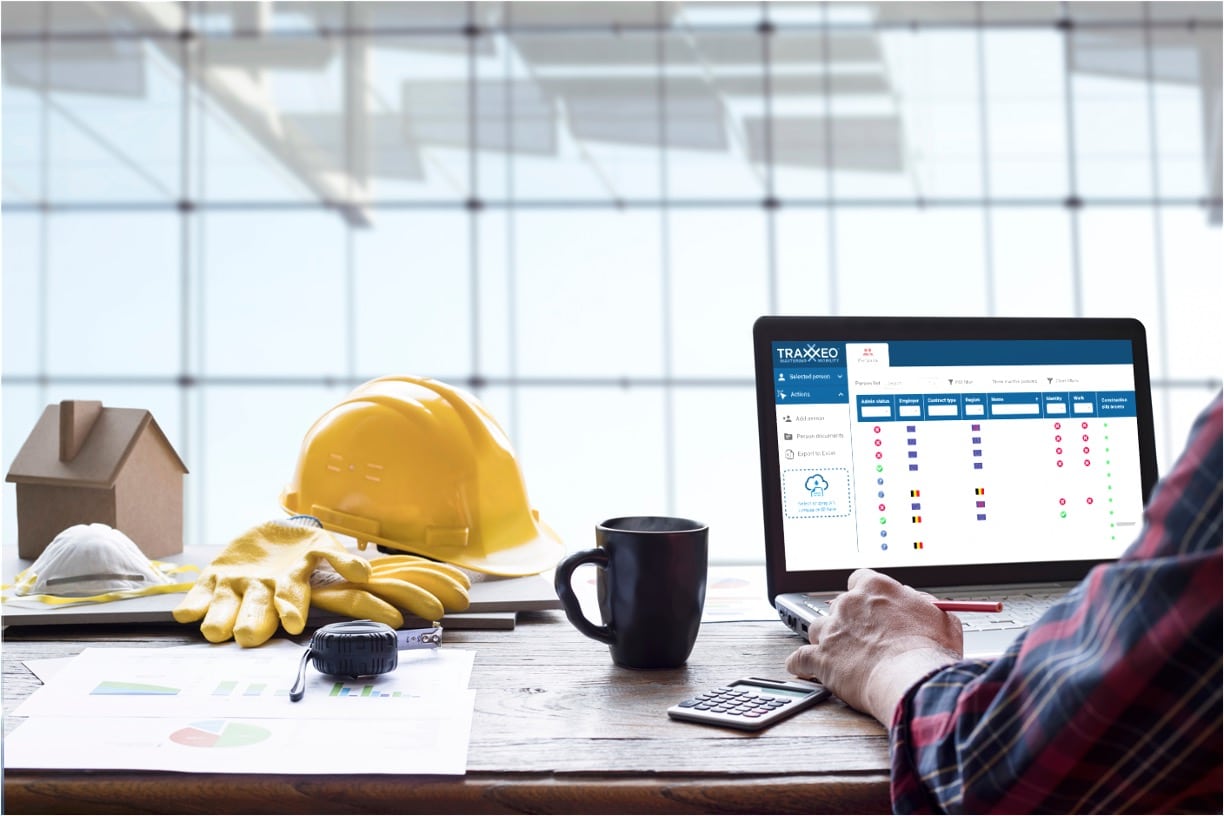Browsing Complexity: Just How Construction Document Management Software Application Can Help
Enhancing Operations Efficiency: Engineer's Specialist Strategies for Building And Construction Document Monitoring
In the world of architectural style and building and construction, the precise management of documents stands as a foundation for task success. Architects use numerous strategies to enhance process efficiency and streamline construction paper management procedures. From proficient company methods to the assimilation of collective systems and the application of safe and secure data monitoring services, engineers navigate a complicated landscape of methods and devices. Amidst this intricacy, a pick few expert methods have actually emerged as important in optimizing process effectiveness. These approaches not only guarantee smooth job development yet also hold the essential to opening boosted productivity and precision in the complex world of building and construction document administration.
Trick Paper Company Methods
When handling building files, one of the crucial methods that architects employ is establishing a systematic and reliable organization system. This system commonly entails classifying files based on their type, such as illustrations, requirements, agreements, and permits. By creating distinctive and clear classifications, designers can rapidly locate particular information when required, conserving time and reducing errors in the construction procedure.
Within each group, designers better organize records by using or producing subfolders numbering systems to represent variations or revisions (construction document management). This hierarchical framework makes certain that the most current and appropriate information is quickly obtainable while maintaining a record of modifications made throughout the job timeline
In addition, architects often make use of electronic document management platforms that provide functions like keyword search features, variation control, and accessibility constraints to boost organization and collaboration amongst job stakeholders. These devices enhance the record access procedure, advertise real-time updates, and promote smooth interaction, inevitably adding to the total success of the building and construction task.
Collaborative System Assimilation
To maximize paper monitoring performance in building and construction jobs, designers perfectly integrate collaborative systems to enhance communication and streamline coordination amongst project stakeholders. By leveraging collective platforms such as project monitoring software program, cloud-based storage space systems, and interaction devices, engineers can produce a centralized hub for all project-related records and interaction channels. These platforms allow employee to accessibility, evaluation, and collaborate on documents in real-time, lowering hold-ups and the danger of mistakes connected with conventional document monitoring approaches.
Joint platform combination additionally promotes openness and accountability within the task team, as all stakeholders have exposure right into the current project updates and alterations. By streamlining interaction and file sharing, designers can ensure that all employee are working from the most current information, reducing the chances of conflicts or misunderstandings arising due to out-of-date files.
In addition, collaborative platforms allow smooth cooperation between designers, contractors, clients, and various other task stakeholders, advertising an extra cohesive and effective job process. By damaging down communication barriers and assisting in details exchange, architects can drive productivity and development in building jobs, eventually causing effective task my blog end results.
Version Control Ideal Practices
Implementing efficient variation control techniques is vital for keeping record precision and uniformity in construction projects. By establishing a clear system for managing modifications, job groups can make certain that everyone is working from the most updated paperwork, lowering the threat of errors and inconsistencies throughout the building and construction phase.
Among the vital finest practices for version control is to designate one-of-a-kind identifiers to every file version. This can be attained by utilizing a numbering system or day stamp that clearly indicates the order of revisions. By clearly labeling each model, group participants can easily track the progression of the file and determine the most current version.

Automation Tools for Effectiveness

Document article source control software application, like Procore or PlanGrid, systematizes task documentation, making it quickly obtainable to all stakeholders. These systems allow for real-time partnership, version control, and automated back-ups, guarding versus information loss. Additionally, Building Information Modeling (BIM) software application automates the generation of building illustrations and guarantees that modifications are integrated across all associated papers.
Incorporating automation devices with cloud storage space options better improves access and security. By automating the document management procedure, project teams can focus their effort and time on value-adding tasks, inevitably boosting performance and click for source task results.
Secure Information Monitoring Solutions
Efficiently guarding and taking care of project data is vital in the building and construction industry to make certain confidentiality and stability throughout the project lifecycle. Protected data monitoring remedies play a crucial duty in shielding sensitive information from unapproved gain access to or violations. Architectural companies can make use of encrypted cloud storage solutions to firmly share and keep job files with licensed personnel. Implementing accessibility controls, such as individual verification and approval setups, makes sure that only licensed people can check out or modify delicate data.
Additionally, making use of digital legal rights monitoring (DRM) tools adds an added layer of safety and security by protecting against the unauthorized distribution or duplication of task documents. Normal data backups are necessary to reduce the threat of information loss due to unanticipated scenarios like equipment failures or cyber-attacks. Collaborative platforms with integrated protection features enable seamless interaction and documents sharing amongst task staff member while preserving data stability.
Final Thought
Finally, implementing key file organization methods, incorporating joint systems, exercising variation control finest techniques, making use of automation devices, and adopting protected information management remedies are important approaches for improving process performance in building document management. These expert methods can enhance processes, enhance communication, ensure accuracy, and maintain data safety and security throughout the building and construction project lifecycle.
In the world of building design and construction, the careful management of records stands as a foundation for task success. These methods not only guarantee smooth job development but also hold the vital to unlocking enhanced efficiency and precision in the intricate realm of building and construction record management.
To maximize file monitoring performance in building and construction tasks, designers effortlessly integrate collaborative platforms to enhance communication and enhance coordination amongst job stakeholders. These platforms enable group members to access, evaluation, and team up on documents in real-time, minimizing hold-ups and the risk of mistakes connected with conventional record monitoring techniques.
Using automation devices in building document monitoring considerably improves performance and simplifies processes for job teams. construction document management.